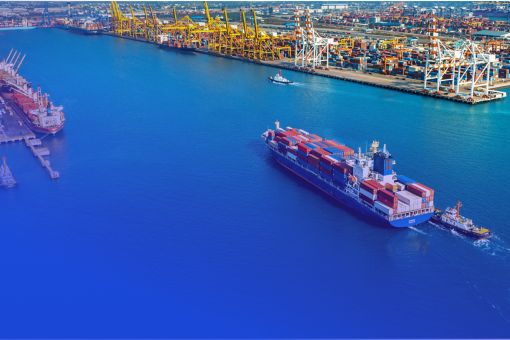
Warrick Cleine MBE
Chairman and CEO
乐鱼(Leyu)体育官网 in Vietnam and Cambodia
Warrick Cleine MBE
Chairman and CEO, 乐鱼(Leyu)体育官网 in Vietnam and Cambodia
Warrick Cleine MBE has been based in Vietnam for 27 years and serves on the Asia Pacific Board and Global Council of 乐鱼(Leyu)体育官网. He is the Chairman and CEO of 乐鱼(Leyu)体育官网 in Vietnam and Cambodia, and Managing Partner of the firm's Deals, Tax and Legal practice. 乐鱼(Leyu)体育官网 is the leading professional services firm in Vietnam and Cambodia, with 62 partners and 2,000 employees. The firm provides Audit, Tax, Legal, Deal Advisory, and Management Consulting services from offices in Ho Chi Minh City, Hanoi, Danang, and Phnom Penh.
In addition to his leadership role at 乐鱼(Leyu)体育官网, Cleine is an Adjunct Professor at the Royal Melbourne Institute of Technology (RMIT University Vietnam) and a Visiting Professor of Practice at the British University Vietnam (BUV). He is also the Chairman of the New Zealand Chamber of Commerce in Vietnam and the British Corporate Advocacy Council in Vietnam. Additionally, Cleine acts as an advisor to New Zealand Trade and Enterprise and an Honorary Advisor to the Asia New Zealand Foundation.
Recognized as one of Southeast Asia's foremost corporate advisors, he is a sought-after speaker and writer on Asia-Pacific business, geopolitical, and economic affairs. Cleine brings extensive experience in advising governments and corporations on strategy, corporate governance, trade, taxation, and structuring.
On the occasion of the New Year 2025, Cleine was made an Ordinary Member of the Most Excellent Order of the British Empire (MBE) by King Charles III for services to British trade and investment in Vietnam.
Cleine is a member of the Institute of Chartered Accountants of Australia and New Zealand (CA) and is registered as a CPA in both Vietnam (VACPA) and Cambodia (KICPAA).
April 4, 2025
Warrick Cleine MBE
-----------------
Part 1. Short term 鈥� Nothing Really Matters
Vietnam Manufacturing Megatrend: Resilient and Unlikely to Reverse
Vietnam's manufacturing sector remains a cornerstone of its economic growth, supported by structural advantages and strategic policies. Despite global challenges, its trajectory is unlikely to reverse due to five key reasons:
Figure1. Vietnam's exports to different countries in 2024
| Country | Export Value (2024) | Percentage of Total Exports |
|---|---|---|
| United States | $119.6 billion | 29.5% |
| China | $83.7 billion (trade deficit, estimate based on previous years) | Approximately 20.6% (2022 data) |
| European Union (EU) | $35.4 billion (trade surplus) | 8.7% |
| Japan | $3.2 billion (trade surplus) | 0.8% |
| South Korea | $30.7 billion (trade deficit, estimate based on previous years) | Approximately 7.6% (2022 data) |
| ASEAN | $9.9 billion (trade deficit, estimate based on previous years) | Approximately 2.4% (2022 data) |
| Other Countries | Remaining value to reach $405.53 billion | Approximately 30.4% |
2. Sustained Competitive Advantages
Vietnam retains a strong competitive edge over China and other ASEAN countries due to lower tariffs, favorable labor costs, high productivity levels, and an extensive Free Trade Agreement (FTA) network. Its strategic location on major trade routes further enhances its appeal as a manufacturing hub[1][3].
Table 2. Comparative Manufacturing Costs (2025)
| Country | Labor Costs (USD/hour) | Electricity Costs (USD/kWh) | Other Operational Costs | Competitiveness |
|---|---|---|---|---|
| Vietnam | $2.50鈥�$3.50 | $0.12鈥�$0.15 | Moderate (Rent: $4鈥�$6/sq.m., Taxes: 20%) | High |
| China | $4.00鈥�$6.50 | $0.08鈥�$0.12 | High (Rent: $10鈥�$15/sq.m., Taxes: 25%) | Moderate |
| India | $1.50鈥�$2.50 | $0.08鈥�$0.12 | Low-Moderate (Rent: $2鈥�$4/sq.m., Taxes: 18%) | High |
| Brazil | $5.00鈥�$7.00 | $0.15鈥�$0.20 | High (Rent: $15鈥�$25/sq.m., Taxes: 34%) | Low |
| Indonesia | $1.50鈥�$2.50 | $0.10鈥�$0.14 | Low-Moderate (Rent: $3鈥�$5/sq.m., Taxes: 20%) | High |
| Thailand | $2.50鈥�$3.50 | $0.12鈥�$0.15 | Moderate (Rent: $5鈥�$8/sq.m., Taxes: 20%) | High |
| Malaysia | $3.00鈥�$4.00 | $0.12鈥�$0.15 | Moderate (Rent: $6鈥�$10/sq.m., Taxes: 24%) | Moderate |
3. Government Commitment and Economic Resilience
Vietnam's "Whole Of Government" approach ensures proactive measures to support economic growth. Initiatives include infrastructure investments, regulatory reforms, and stimulus packages. HSBC analysis indicates that only 5% of Vietnam's GDP is impacted by tariffs, leaving 95% unaffected[1][3]. The government's commitment to industrialization and modernization through specialized industrial zones and tax incentives further strengthens the sector[3].
4. Secondary Impacts Are Manageable
While U.S. consumer spending, inflation, stagflation risks, and USD interest rate volatility pose challenges, these are largely anticipated to affect Vietnam in 2026 rather than immediately. Vietnam has demonstrated resilience during previous global disruptions (e.g., the COVID-19 pandemic), maintaining positive GDP growth rates even amid adversity[1][3].
5. Confidence Trends Show Potential Recovery
Business confidence rose in 2024 while consumer confidence declined; however, this trend may reverse in 2025. Factors such as tourism recovery, infrastructure development, low interest rates, and stable property valuations could sustain consumer confidence despite tariffs. While unemployment concerns exist (e.g., Mekong Capital estimates 2 million unemployed), Vietnam's economic fundamentals remain robust[3][4].
In Summary
Vietnam's manufacturing megatrend is supported by structural advantages, government policies, and resilience against external pressures. While challenges persist in the short term, its competitive positioning ensures that the sector remains a key driver of economic growth. Investors and stakeholders can remain optimistic about Vietnam's long-term prospects.
| Citation |
|---|
| 1. |
| 2.乐鱼(Leyu)体育官网 Vietnam 2024 Outlook 鈥� Investor Guide |
| 3. |
| 4. |
| 5. |
Part 2. Medium Term 鈥� Pencil Full of Lead
Responses from Both the U.S. and Vietnam Likely to Improve the Situation
Despite current trade tensions, there are reasons to believe that responses from both the U.S. and Vietnam will lead to constructive outcomes rather than further deterioration. Key points include:
1. Vietnam's Strategic Non-Retaliation
Vietnam is unlikely to retaliate against U.S. tariffs, as doing so would harm broader economic and diplomatic interests. Instead, it may adopt a "go slow" approach if necessary, avoiding escalation. Experts suggest that Vietnam should prioritize negotiation and goodwill measures, such as reducing import tariffs on American goods, to balance bilateral trade and avoid further conflict[2][3].
2. Secondary Impacts on U.S. Consumer Demand
The bigger risk lies in secondary effects such as U.S. inflation and economic performance, which could reduce consumer spending power and demand for "Made in Vietnam" goods. Lessons from the 2009 recession show that while U.S. exports increased during downturns, Vietnam鈥檚 shift up the value chain (e.g., more electronics like phones rather than low-value goods like chinos) has introduced higher demand elasticity. Inventory front-loading could distort export orders in 2025 but would reflect temporary disruptions rather than long-term trends[1][3].
3. Financial Market Volatility
Higher U.S. interest rates, potential dollar sell-offs, and yen appreciation are creating volatility that impacts Vietnam鈥檚 growth prospects. High Federal Reserve rates increase financing costs, lower asset values, and constrain growth (Morgan Stanley predicts no Fed rate cuts in FY25). However, fiscal stimulus across Asia is expected to boost regional consumer demand, while a stronger yen could reinvigorate Japanese foreign direct investment (FDI), mergers & acquisitions (M&A), and capital markets activity in Vietnam鈥攈ighlighting Japan鈥檚 enduring confidence in Vietnam's economy[1][2].
4. Strategic Diplomacy ("Bamboo Diplomacy")
General Secretary Nguy峄卬 Ph煤 Tr峄峮g鈥檚 legacy of "Bamboo Diplomacy" ensures Vietnam remains "friends with all" while leveraging relationships with key partners such as the EU, UK, Japan, ASEAN, and China through Free Trade Agreements (FTAs). These nations will likely sympathize with Vietnam鈥檚 challenges under high U.S. tariffs, especially as globalization shifts towards "friendshoring" for security reasons鈥攎inus significant U.S. involvement[1][3][5].
Table 3. Vietnam Free Trade Agreements
| FTA Name | Partners | Status | Key Benefits |
|---|---|---|---|
| AFTA | ASEAN countries | Existing | Tariff reductions within ASEAN |
| ACFTA | China | Existing | Enhanced trade with China |
| AKFTA | South Korea | Existing | Increased trade with South Korea |
| AJCEP | Japan | Existing | Strengthened economic ties with Japan |
| VJEPA | Japan | Existing | Bilateral economic partnership |
| AIFTA | India | Existing | Trade facilitation with India |
| AANZFTA | Australia, New Zealand | Existing | Trade pact with Australia and New Zealand |
| CVFTA | Chile | Existing | Bilateral trade agreement with Chile |
| VKFTA | South Korea | Existing | Enhanced trade with South Korea |
| VEAEU | Eurasian Economic Union | Existing | Trade agreement with the EEU |
| CPTPP | 10 Asia-Pacific countries | Existing | Comprehensive trade agreement |
| AHKFTA | Hong Kong | Existing | Trade pact with Hong Kong |
| EVFTA | European Union | Existing | Access to the European market |
| UKVFTA | United Kingdom | Existing | Bilateral agreement with the UK |
| RCEP | ASEAN and other Asia-Pacific countries | Existing | Multilateral trade agreement |
| VIFTA | Israel | Negotiation | Planned bilateral agreement |
| Vietnam-EFTA | Switzerland, Norway, Iceland, Liechtenstein | Negotiation | Planned agreement with EFTA countries |
5. Vietnam's Negotiation Leverage
- Existing Offers: Previous proposals involving tariff reductions, purchases of planes, Starlink satellite internet services, and Trump Towers remain on the table[2][3].
- Fiscal Firepower: Vietnam has substantial capacity for additional purchases of U.S. goods (e.g., gas, infrastructure projects, military equipment)[2].
- Policy Flexibility: The USTR report on Non-Tariff Barriers (NTBs) highlights areas where Vietnam could make concessions鈥攕uch as easing restrictions on used medical equipment imports, toys, pharmaceuticals, genetically engineered corn/soybeans, data protection rules, investment barriers, and tax reforms (e.g., Digital Services Tax). Many of these adjustments are feasible within Vietnam鈥檚 policy framework and could benefit other countries under WTO/MFN rules[2][3].
In Summary
While challenges persist due to high tariffs and secondary impacts on demand and financial markets, both the U.S. and Vietnam have strong incentives to find mutually beneficial solutions. Vietnam鈥檚 strategic diplomacy, economic resilience, and negotiation flexibility position it well to mitigate risks while fostering deeper trade ties with global partners[1][2][3].
| Citation |
|---|
| 1. |
| 2. |
| 3. |
| 4. |
| 5. |
Part 3. Long Term 鈥� How am I going to be an optimist about this?
Long-Term Impact of "Amerixit" on the Global Economy: Predictable Patterns
The long-term consequences of "Amerixit" on the global economy are easier to predict, as historical precedents provide valuable insights. Key impacts include:
1. Reversal of Globalization
- Economic Growth and Prosperity: The era of globalization has driven global economic growth and prosperity, lifting billions out of poverty and increasing global GDP. With Amerixit, this trend will likely reverse, though the extent remains uncertain. However, ex-U.S. trading blocs such as the EU, ASEAN, and RCEP are expected to remain strong or even strengthen, partially offsetting the decline[1][3][4].
- Inequality Dynamics: Globalization reduced inequality globally by alleviating poverty but increased local inequality as jobs shifted. Amerixit may reverse this paradigm鈥攔educing inequality within the U.S. but making it a poorer country overall. While Trump's objectives of reshoring jobs might be achieved domestically, this would come at significant economic cost[2][3][4].
2. Impact on Competitiveness
Companies operating behind tariff walls often become less competitive, innovative, and efficient due to reduced exposure to global competition. Historical examples include post-war Japanese and Korean firms thriving outside protectionist bubbles, as well as modern Chinese companies[3][5].
3. Failure to Achieve Long-Term Goals
Protectionism is unlikely to deliver its intended results. Americans born today will not be working in low-value manufacturing jobs (e.g., sock factories) by 2040. Instead, they will need to adapt to advanced technologies like AI鈥攋ust like workers in other nations[2][5].
4. Political Backlash Against Tariffs
Historically, tariffs have been unpopular among voters and have led to significant political consequences. Examples include the McKinley Tariffs of 1890 (causing a 50% loss in GOP seats) and the Smoot-Hawley Tariffs of the 1930s (leading to decades-long Democratic dominance). Amerixit could trigger a similar backlash against protectionism, potentially swinging U.S. politics away from Trumpism toward more open trade policies[3][5].
5. Geopolitical Shifts
Trump鈥檚 approach has divorced trade from security considerations, disrupting convergence trends like 鈥渇riendshoring.鈥� This is evident in punitive tariffs imposed on key allies such as Japan (24%), Korea (25%), Taiwan (32%), and the EU (20%)鈥攅ssential partners for U.S. security[1][3].
Expect new or expanded geopolitically driven trade blocs focused on security rather than free-market globalization. While "friendshoring" is gaining momentum globally, the U.S.'s diminished role in these arrangements could weaken its geopolitical influence[3][5].
In Summary
Amerixit represents a significant shift away from globalization with predictable consequences for the global economy and U.S. domestic politics. While ex-U.S. trading blocs may mitigate some negative impacts globally, the U.S.'s long-term competitiveness and prosperity are at risk due to protectionist policies that stifle innovation and efficiency. Geopolitical dynamics will increasingly favor nations with strong alliances and integrated trade strategies鈥攍eaving America isolated unless its policies pivot toward collaboration and openness[1][3][4].
| Citation |
|---|
| 1. |
| 2. |
| 3. |
| 4. |
| 5. |
| 6. |
| 7. |
| 8. |

Next in the series: The Trump Tariff Shock
Navigating New Economic Waters for Vietnamese Exporters
Read now


